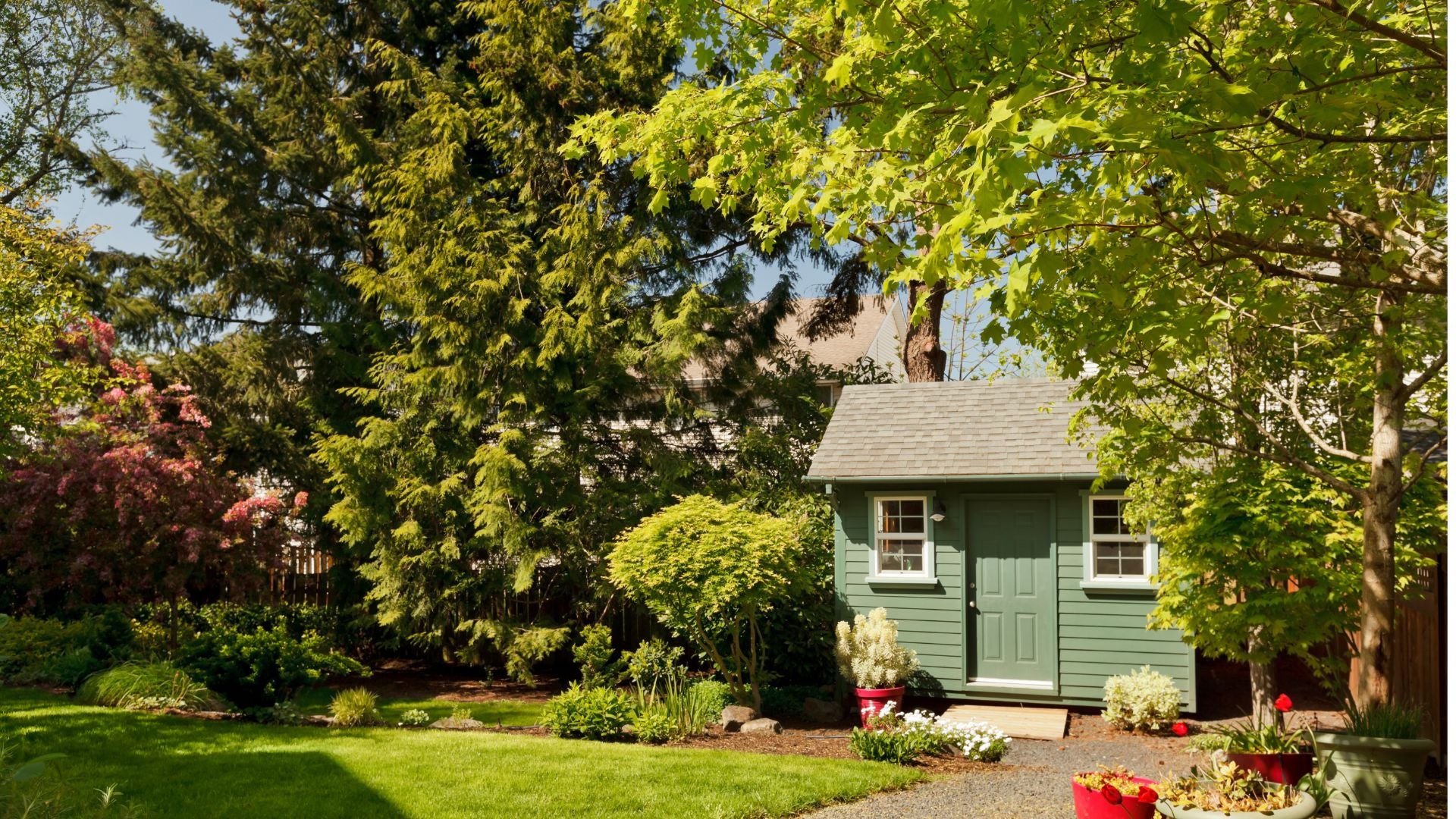As we strive to cultivate the perfect garden oasis, the integration of functional elements like sheds can pose a unique challenge. How do we balance utility and aesthetics, ensuring our sheds complement rather than detract from the overall design? The answer lies in the art of blending, where strategic planning and creative flair come together to create a harmonious and visually stunning landscape.
In this article, we’ll explore ingenious ways to seamlessly incorporate a garden shed into your outdoor space without sacrificing the enchanting ambience you’ve worked so hard to curate. Let’s dig in.
Choosing the Right Shed Design

Style Matching
Selecting a shed design that complements your home’s architectural style or the garden’s aesthetic ensures harmonious integration. For instance, a modern home might benefit from a sleek, minimalist shed, while a rustic garden may call for a charming, cottage-style structure.
This thoughtful alignment helps the shed blend naturally into its surroundings, enhancing the overall visual appeal.
Material Selection
Using materials that mirror those in the surrounding landscape is key to effective camouflage. If your garden features wooden elements, building the shed from similar wood can create a cohesive look.
Alternatively, incorporating stone or metal elements can tie the shed to existing pathways or fences. This material continuity helps the shed become part of the environment rather than standing out as an isolated structure.
Colour Coordination
Choosing paint or stains in natural tones that match the garden’s colours enhances the shed’s seamless integration. Earthy shades like greens, browns, and soft neutrals can complement plant life and soil, allowing the shed to blend in effortlessly.
This careful colour matching not only contributes to the shed’s subtlety but also maintains the garden’s serene and unified appearance.
Using Vegetation to Disguise the Shed

Climbing Plants
Utilising climbing plants such as ivy or jasmine can transform a shed into a living wall, seamlessly integrating it into the garden. These plants naturally cling to surfaces, covering them with lush foliage and vibrant blooms. Ivy offers year-round greenery, while jasmine adds seasonal fragrance and colour.
Strategic Planting
Planting shrubs, trees, or tall grasses around the shed’s perimeter can effectively obscure it from view, creating a natural screen. Choose plants with varying heights and textures to add depth and interest.
For example, tall grasses can provide a soft, flowing barrier, while dense shrubs offer a more solid visual block. Trees with spreading canopies can also cast shade, further integrating the shed into the landscape.
This strategic planting not only disguises the shed but also enriches the garden’s ecosystem.
Vertical Gardens
Attaching vertical gardens to the shed can make it an extension of the garden itself, with layers of greenery cascading down its walls. These gardens can be composed of modular panels filled with diverse plant species, including herbs, succulents, and flowering plants.
This approach not only enhances the shed’s visual appeal but also maximises space for gardening in small areas. Vertical gardens contribute to biodiversity, improve air quality, and offer a unique, living facade that evolves with the seasons.
Incorporating the Shed into Garden Features
Pergolas and Arches
Adding a pergola or archway that connects the shed to the garden path can seamlessly integrate it into the landscape design. These structures create a visual link between the shed and the rest of the garden, guiding the eye and providing a sense of continuity.
A pergola can be adorned with climbing plants like roses or wisteria, adding shade and a touch of elegance. An archway serves as an inviting entrance, transforming the shed into a destination rather than a standalone feature.
Water Features
Incorporating a water feature, such as a pond or fountain, near the shed can draw attention away from the structure while enhancing the garden’s tranquillity. The soothing sound of water provides a calming ambience, creating a peaceful retreat.
Positioning a pond with aquatic plants and perhaps a few fish can attract wildlife, adding life and movement. A fountain can serve as a focal point, its visual and auditory appeal diverting focus from the shed itself.
Pathways and Hardscaping
Creating pathways or surrounding the shed with stone, brick, or gravel helps visually anchor it within the garden layout. These materials can complement the shed’s design and the garden’s style, making it a cohesive part of the hardscape.
A well-designed path invites exploration and connects different garden areas, while the use of natural materials ensures the shed feels like an integral component of the landscape. This approach not only enhances accessibility but also reinforces the garden’s overall structure and design.
Creative Paint and Décor Ideas
Mural Art
Transforming a shed into a piece of art with a painted mural or stencils can add a unique charm to your garden. Choose themes that complement the garden, such as floral patterns, landscapes, or abstract designs.
A mural can reflect personal style and create a visual focal point that draws admiration. Using stencils allows for intricate, repetitive designs that ensure precision and artistic flair.
Camouflage Paint Techniques
Techniques like ombre shading or camouflage patterns can help blend the shed with its surroundings. Ombre involves gradually transitioning colours, mimicking the natural tones of the garden, while camouflage patterns use irregular shapes and hues to mimic foliage.
These methods disguise the shed, making it less obtrusive and more harmonious with the environment.
Decorative Elements
Adding garden-themed decorations enhances the shed’s appearance, turning it into a feature rather than an eyesore. Trellises can support climbing plants, adding vertical interest and texture.
Birdhouses attract wildlife and provide a whimsical touch, while rustic lanterns offer charm and soft lighting. These elements enrich the shed’s aesthetic, integrating it more fully into the garden landscape.
Additional Tips for Disguising Your Garden Shed

Lighting
Use garden lighting to highlight plants and features around the shed, drawing attention to the landscape rather than the structure. Strategically placed solar lights or spotlights can illuminate pathways and emphasise the beauty of surrounding flora.
Roof Integration
To make the shed a true part of the garden ecosystem, consider a green roof with low-maintenance plants. This will improve aesthetics, support biodiversity, and provide insulation.
Multi-Functional Sheds
Design sheds that serve dual purposes, such as combining storage with a garden seating area. This approach increases versatility and enhances visual appeal, making the shed a functional and attractive garden feature.
Create a Hidden Gem with Garden Depot
With a little creativity, you can remake your garden shed from an unsightly eyesore into a harmonious landscape feature. By blending your shed with its surroundings using natural elements, clever disguises, and strategic placement, you can seamlessly integrate it into your outdoor space.
Remember, the key to a successful shed camouflage lies in careful planning and execution. If you’re seeking expert advice on choosing and installing the perfect shed for your landscape, don’t hesitate to contact Garden Depot. Our team can help you transform your shed into a hidden gem that complements your outdoor oasis.

